I was forty when I had my first stone crab. Miami Beach had become cool again. Art deco hotels were being brought back to their original glory. Gianni Versace had bought a house on Ocean Drive. Slinky, thong-clad amazons were parading up and down the sand. And, at the end of South Beach, a legendary restaurant that my parents had talked about and talked about and talked about hadn’t changed one bit.

Joe’s Stone Crab. There may be no other restaurant in the world associated so much with a single dish. It’s still there now. Four generations and 104 years later. Only open during stone crab season from October 15 to May 15. And still with a sign requesting diners to wear “business casual”.
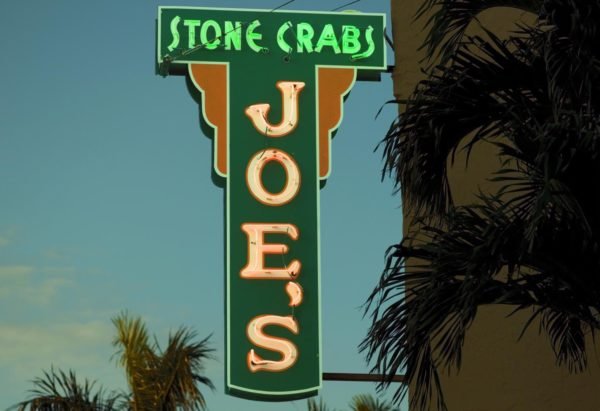
That first plate of crab was extraordinary. And the second plate, two days later, with even bigger stone crabs, was even better. I was hooked. Stone crabs were everything they were cracked up to be. And what made them even better was that I could eat them with only a minimum amount of guilt.

If anyone actually showed up for that grade nine science class on the day they dissected a crayfish, you probably remember the word regeneration. In simple terms, it means that stone crabs, other crustaceans and some insects can regrow a limb if it is lost. Which makes stone crabs one of the very few creatures that are fished that are considered sustainable and one of the very, very few given a “Best Choice” rating by the Monterey Bay Aquarium.
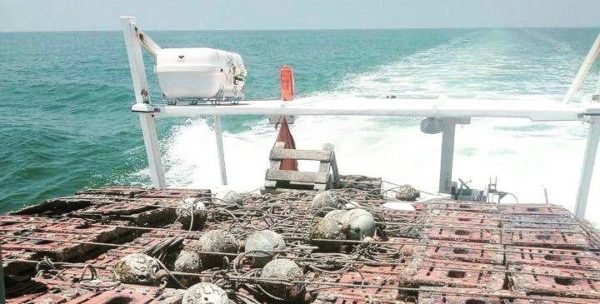
After a stone crab is caught in a trap, if the claws meet the minimum size of 70 mm (about 2-3/4 inches), one is snapped off and the crab returned to the sea. Not all crabs survive the amputation with mortality rates being estimated around 25%. Those that do survive, however, can regenerate a claw three, sometimes four times.

Now Miami Beach is a nice place to visit but I wouldn’t want…you know where that’s going. But, unfortunately, outside of Southern Florida, stone crab claws are not an easy find. And any time I have found them, they have almost always been frozen. And stone crabs are a lot like people. They don’t take kindly to freezing.
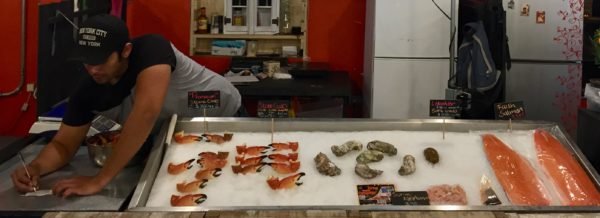
I have seen them in Mexico as well. They are a fairly common sight at Mercado San Juan in Mexico City. And I’ve seen the occasional small, frozen ones in San Miguel. But I had never seen fresh claws layed out in all their glory, on a bed of shaved ice, the orange and black on their shells beckoning me to take them home, until a few weeks ago in Mercado Sano.

José Manuel Sanchez Osejo opened his little fish stall, Sea Market, in the Mercado in September. Mane carries a limited selection of fish and shellfish (and the more limited, the better, when it comes to dwellers of the deep) and has his products shipped in weekly from Ensanada. So far, every time I’ve been to Sea Market, stone crab claws or tenazas de congrejo moro, as Mane calls them in Spanish, have always been in stock.

Stone crab claws come in different sizes and the bigger, the better. For the bigger they get, the higher the meat-to-shell weight ratio. And, unlike their sister, the lobster, the meat stays just as tender no matter how old they get.
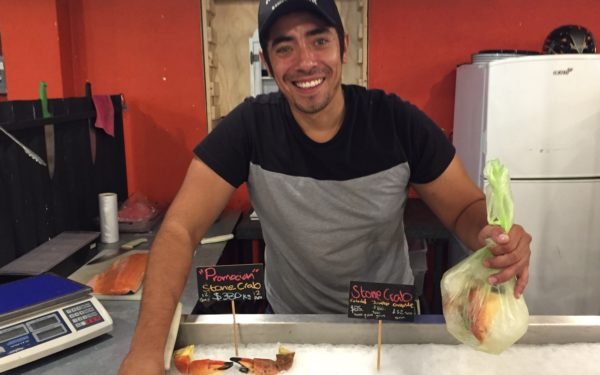
“Some of my clients say the smaller ones are the sweetest”, Mane told me but, personally, I would still spend the extra for the biggest you can buy.
Every retailer and restaurant seems to have a different size grading system for the stone crabs they sell and each one seems to use different terminology. I’ve seen colossal, jumbo, giant, choice, select and, of course, large and medium (but never small). José Manuel Sanchez Osejo grades his claws as colosal, jumbo, large and medium and charges accordingly. My recommendation is to go for the colosal which should give you six to eight per kilo or jumbo which should give you nine to twelve.
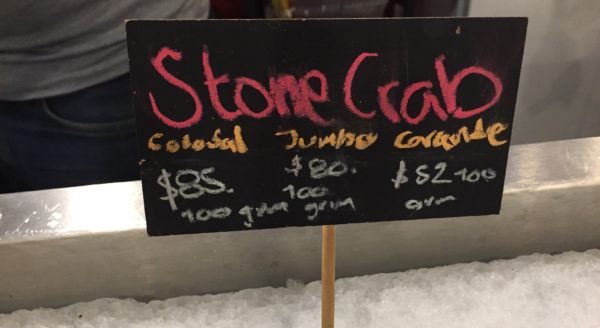
Despite Don Day’s Wife’s proclamation that “I could feed eight people a four-course dinner for what you’re spending,” my reminder of just how extraordinarily good stone crabs are, accompanied by my combination of sweet-talking, whining and begging (sorry, I’m not good enough at it to give lessons), I soon had four colosals in a plastic bag weighing in at just over half a kilo for $450. And I had Don Day’s Wife saying, “Sometimes in life you just have to have an amazing treat.”
Now I know that price ain’t cheap. In fact, after truffles, stone crab claws may be the most expensive food I’ve ever purchased. But the price of the crab is almost your total expense for a very special dinner. The only other things you need are a jar of mustard and mayo in the fridge, a lemon (or lime), a leaf or two of lettuce to pretty things up and maybe some bread or tostadas.
One other nice thing about stone crabs is you can’t mess them up by under or overcooking them. Because, almost always, stone crabs come cooked. It’s done within hours after they have been landed by the fishing fleet and I have never had one that wasn’t done perfectly.
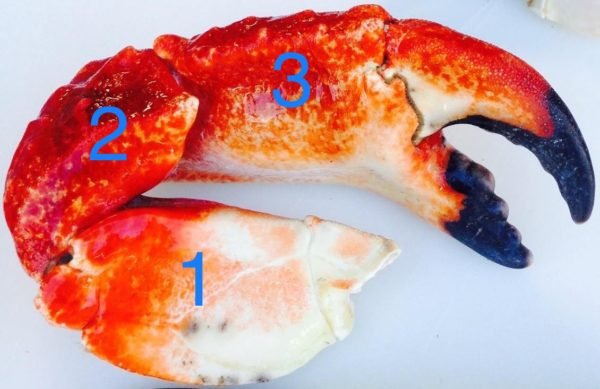
There is one thing you can mess up a little though and that’s cracking. Leave the nutcrackers in the drawer, for stone crabs earned their name for their rock-hard shell and you will need a mallet or hammer to get through them. I wrap them in a tea towel (so the shell doesn’t end up decorating the kitchen walls) and do it in three steps ending up at the claw.
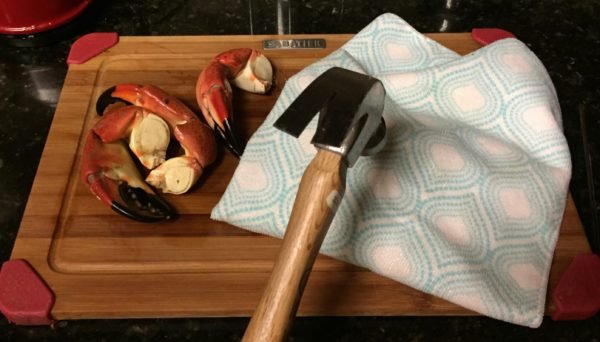
Tap with the hammer as gently as possible so you just break through the shell and don’t shatter it into a hundred pieces. Then, with your fingers and perhaps a little help from a pick or skewer, you should have all of the meat out in under a minute.
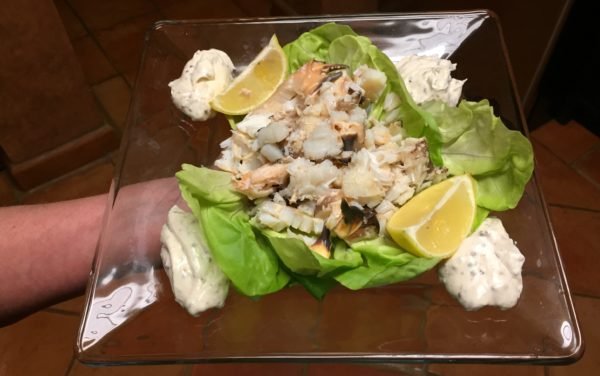
After the meat has been removed, Don Day’s Wife’s recommended way to serve it is “as simply as possible”. With the meat from the four claws we bought at Sea Market, she placed them on a few leaves of Boston bibb, squeezed a little lemon on top, and sided them with a sauce of three parts mayo/one part mustard. We ate right off the serving plate, in front of the TV, scooping up the last part with the lettuce while trying to figure out who got who pregnant on “Top Of The Lake”.
As always, they tasted so very, very good and if you’ve ever wondered why stone crab tastes so good, it’s all about that phrase popularized by the sixties hippie movement, “you are what you eat”. A stone crab’s favorite food is oysters. Enough said? Probably, unless you’re wondering how they shuck them. They don’t. Those claws are so strong, they just crack the shell in half.
As it is always best to let your spouse have the last word, I’ll leave you with those of Don Day’s Wife: “I think I’ve had them all…blue, dungeness, soft-shell, snow, king…but this is the sweetest tasting crab meat I have ever had the joy of eating.”
Sea Market is located in Mercado Sano, Ancha de San Antonio 31, in San Miguel de Allende, Mexico. They are open every day but Sunday from 9:00 am to 6:00 pm.

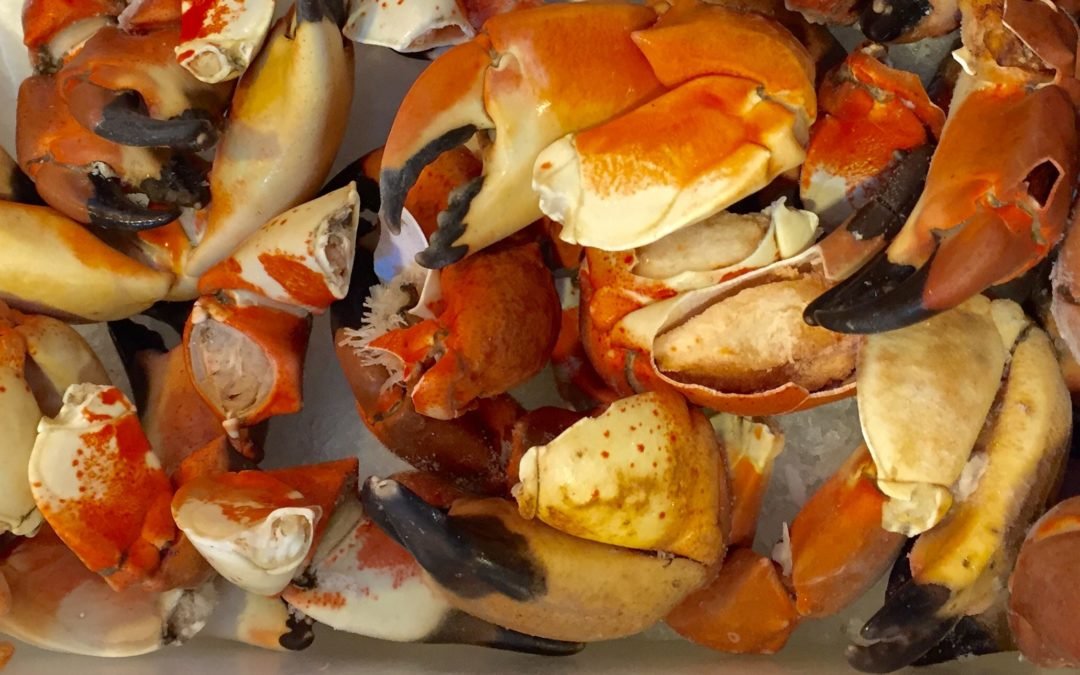
We became addicted to stone crabs visiting family in the Clearwater area. No visit in season was complete without a visit to Frenchies, either on the beach or the other location with boat parking. We’d have multiple orders of stone crab followed by fresh grouper sanwhiches.
Fond memories of stone crab and picnic tables at Frenchies.
what a surprise that Miguel has said ok to competition! His wife, Isabel, ‘the french quiche’ person will not… and there are other quiche makers who are MUCH better in SMA.
I can have one hell of a reaction from some shell fish, but I will always risk it for fresh Lobster (without butter – I know, I know), and crab meat! I always think of Jack Nicholson in “As Good As It Gets”, one of the few comedies I actually enjoyed, and his fixation on getting hard shell crab on his first date with Hunt. I can eat a ton of it as well. It is one of those foods that even while you are chewing and full, you are still anticipating the next mouthful. Agree, as well, that no sides are necessary for the delightful claws! I had no idea that they amputated a claw and threw them back to regrow though? Just out of curiosity, if they amputated and put them in a fish tank, would they regrow? Nice post, as always!
How about the hash browns that come with the crabs in Miami?
Jose also has a very good lightly smoked salmon.
So proud of you Hermano!!!
Joes’ signature mustard sauce recipe may be googled and prescribes light cream. It is an authentic aspect of this fabulous food.
After 4 ! tries (days) we were finally allowed to have some Stone Crab – at a greater price than
$450… They seemed fresh frozen (watery) a disappointment, but it did bring back memories
of JOE´S. The first time you´ve failed me.